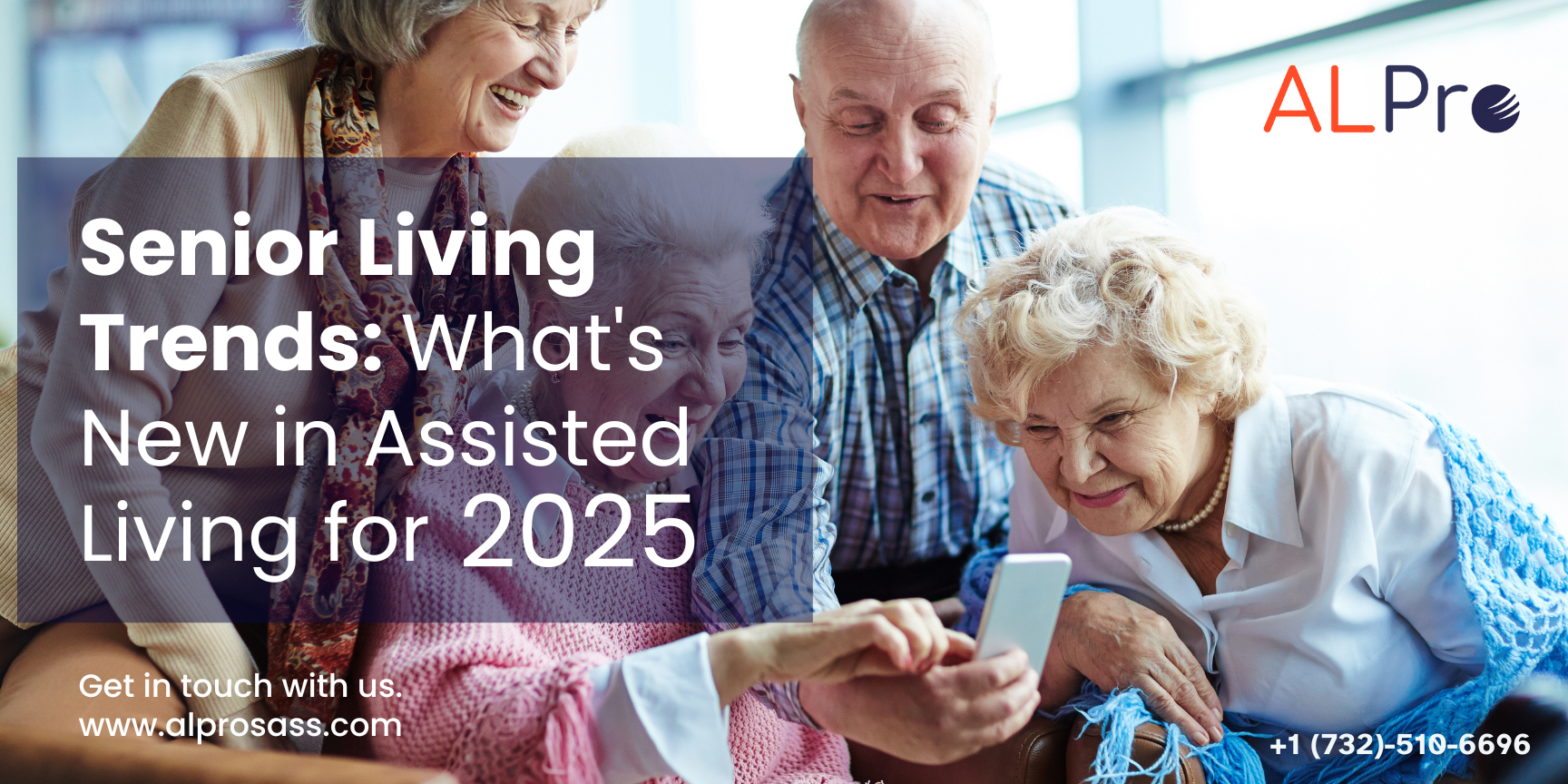Senior Living Trends - What's New in Assisted Living for 2025

The assisted living industry is undergoing a dynamic transformation driven by evolving senior preferences, technological advancements, and a renewed focus on holistic well-being. As we look toward 2025, emerging trends are reshaping how communities support older adults, creating functional, vibrant, sustainable, and inclusive spaces.
From enhanced wellness programs to intergenerational connections, assisted living in 2025 promises to deliver innovative solutions that empower seniors to lead fulfilling lives. Here's a closer look at the key trends defining the future of assisted living.
1. Comprehensive Wellness Programs: A Holistic Approach to HealthGone are the days when senior living only focused on physical health. In 2025, wellness programs in assisted living communities will embrace a holistic model, addressing physical, mental, emotional, and spiritual well-being.
Key Features of 2025 Wellness Programs:
Personalized Fitness Plans: Customized exercise routines based on residents' mobility levels, goals, and health conditions, including yoga, aqua therapy, and strength training.
Mental Health Support: On-site counseling, meditation classes, and stress-reduction workshops to promote emotional well-being.
Nutritional Excellence: Farm-to-table dining options with nutrient-dense, culturally inclusive menus that support diverse dietary needs.
Sleep Optimization: Programs focusing on improving sleep hygiene, including relaxation techniques and environmental adjustments.
These wellness initiatives aim to enhance overall quality of life while encouraging independence and longevity.
2. Sustainable Living: The Green Revolution in Assisted LivingSustainability is no longer an option—it's an expectation. Assisted living communities are adopting environmentally conscious practices to meet the demand for eco-friendly lifestyles while reducing their carbon footprints.
Sustainable Innovations:
Energy-Efficient Buildings: Utilizing solar panels, energy-efficient HVAC systems, and LED lighting to minimize energy consumption.
Green Spaces: Incorporating gardens, walking paths, and outdoor areas that foster relaxation and connection with nature
Water Conservation: Rainwater harvesting systems and low-flow fixtures to reduce water usage.
Recycling and Waste Management: Comprehensive recycling programs and composting initiatives to manage waste responsibly.
Sustainability aligns with residents' values and enhances community appeal for environmentally conscious families.
3. Intergenerational Living Models: Building Bridges Across GenerationsIntergenerational living is a powerful trend that fosters meaningful relationships between seniors and younger generations. These models create opportunities for shared experiences, learning, and mutual support.
Intergenerational Features:
Shared Housing Models: Communities where seniors and students live side by side, exchanging companionship for reduced rent or mentorship opportunities.
Collaborative Programs: Activities such as gardening, art workshops, or storytelling events that bring children, teens, and seniors together.
Partnerships with Schools: Assisted living facilities collaborate with local schools or universities to create ongoing engagement programs.
Intergenerational living combats loneliness among seniors and instills valuable life lessons in younger participants, fostering empathy and community.
4. Technology Integration: Smart Living for SeniorsTechnology is revolutionizing every aspect of senior living, from health monitoring to entertainment. By 2025, assisted living facilities will embrace smart technology to create safer, more connected, and enjoyable environments.
Tech Trends for 2025:
Health Monitoring Devices: Wearables and smart sensors that track vitals, detect falls, and alert caregivers in real-time.
Voice-Activated Assistance: Devices like smart speakers help residents easily manage schedules, make calls, or control home environments.
Virtual Reality (VR): VR programs for immersive travel experiences, memory care therapies, or fitness activities.
Digital Engagement: Community apps to help residents schedule activities, connect with peers, and stay informed about events.
Technology helps residents maintain independence while staying safe and supported by simplifying daily life and promoting engagement.
5. Redefining Community Design: Spaces That Inspire ConnectionThe physical design of assisted living communities is undergoing a revolution, prioritizing aesthetics, functionality, and resident well-being.
Design Innovations:
More minor, Intimate Neighborhoods: Breaking extensive facilities into smaller, home-like clusters to create a sense of familiarity and community.
Multi-Purpose Common Areas: Versatile spaces that accommodate activities like yoga, social gatherings, or group dining.
Biophilic Design: Incorporating natural elements such as indoor plants, water features, and natural lighting to improve mental health and focus.
Accessibility Enhancements: Universal design features like wider doorways, non-slip flooring, and elevator access to accommodate all mobility levels.
These thoughtful designs ensure residents feel comfortable, inspired, and connected to their surroundings.
6. Expanded Memory Care Services: A New Era of SupportWith the rising prevalence of Alzheimer's and other forms of dementia, memory care services are becoming more advanced and personalized. In 2025, assisted living communities focus on innovative ways to support residents with cognitive impairments.
Memory Care Innovations:
Sensory Stimulation: Spaces designed with calming colors, aromatherapy, and soothing sounds to reduce anxiety and agitation.
Interactive Programs: Music therapy, art sessions, and reminiscence therapy to enhance memory and foster engagement.
Secure Environments: Thoughtfully designed areas that ensure safety while allowing freedom of movement.
These specialized services are helping residents with memory challenges, maintain dignity and enjoy fulfilling lives.
7. Social Responsibility: Creating Impact Beyond the CommunityIn 2025, assisted living facilities will become more than just places of residence—they will be hubs for community impact.
Social Responsibility Efforts:
Volunteering Opportunities: Programs that allow residents to contribute to local causes, fostering purpose and connection.
Community Partnerships: Collaborations with local businesses and organizations to create mutually beneficial relationships.
Educational Workshops: Public seminars on senior health, caregiving, and financial planning are offered to support the wider community.
These initiatives demonstrate a commitment to making a difference beyond the facility's confines.
The Future of Assisted Living: Vibrant, Connected, and EmpoweringAs we approach 2025, assisted living is poised to redefine aging, focusing on personalization, sustainability, and innovation. These trends not only enhance the quality of life for residents but also reflect the values of a new generation of seniors who prioritize well-being, community, and purpose.
For families exploring assisted living options, understanding these trends can provide valuable insights into what to expect and how to choose a community that aligns with your loved one's vision for the future.
Assisted living in 2025 isn't just about care; it's about creating a lifestyle that empowers residents to thrive.
